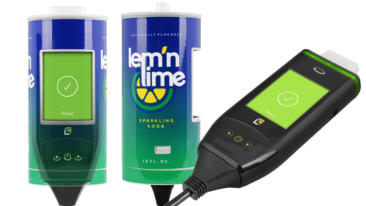
If you’ve ever wondered about the difference between DWI vs DUI, you’re definitely not alone.
These terms get thrown around interchangeably in everyday conversation, but they can have very different legal meanings depending on where you live.
DWI and DUI are legal terms used to classify and differentiate criminal cases related to driving under the influence, and their definitions can vary by state. Whether you’re a parent teaching your teenager about safe driving, someone currently facing charges, or just want to understand the law better, these distinctions could matter more than you think.
The confusion makes perfect sense when you consider that all 50 states handle these terms differently. What counts as a DWI in Texas might be called a DUI in California, and the penalties can vary dramatically based on your location and circumstances.
This article is for general informational purposes and is not legal advice. Consult a qualified attorney for advice about your situation.
Understanding DWI vs DUI: The Core Definitions
What DWI Actually Means
DWI stands for “Driving While Intoxicated” or sometimes “Driving While Impaired.” In states that use this term, it typically applies to drivers who operate a vehicle with a blood alcohol concentration of 0.08% or higher. However, you can still be charged with DWI even if your BAC is below this threshold if your mental or physical abilities are clearly impaired by alcohol, drugs, or medications.
The key thing to understand is that DWI covers all intoxicating substances, not just alcohol. This includes illegal drugs, prescription medications that affect your driving ability, and even over-the-counter medications that cause drowsiness or impairment.
What DUI Actually Means
DUI stands for “Driving Under the Influence” and generally refers to operating a vehicle while impaired by any substance. In many states, this is the umbrella term used for all impaired driving offenses, regardless of whether alcohol or drugs are involved. Some jurisdictions use DUI specifically for drivers under 21 who are caught with any detectable amount of alcohol in their system due to zero-tolerance laws.
In states that distinguish between DWI and DUI, DUI might refer specifically to drug impairment while DWI covers only alcohol specifically. But this isn’t universal, which is exactly why the confusion exists.
Why This Confusion Exists
The legal system didn’t develop these terms in a coordinated way across all states. Each state created its own laws and terminology over decades, leading to the patchwork of definitions we see today. Media coverage and casual conversation often use these terms interchangeably, which adds to the confusion when people move between states or try to understand their legal situation.
Blood Alcohol Content (BAC) and Legal Limits in 2025
What is BAC and How is it Measured?
Blood Alcohol Content (BAC) is the scientific measure of how much alcohol is present in a person’s bloodstream, and it plays a central role in both DUI and DWI cases.
BAC is typically expressed as a percentage—for example, a BAC of 0.08% means there are 0.08 grams of alcohol per 100 milliliters of blood.
Law enforcement uses several methods to determine BAC, including breath tests (using a breathalyzer), blood tests, and sometimes urine tests. The breathalyzer is the most common tool used during a traffic stop, providing a quick estimate of a driver’s blood alcohol content. Blood tests, while more precise, are usually administered at a medical facility or police station. These measurements are crucial in establishing whether a driver is under the influence or intoxicated, and they often serve as the foundation for DWI charges or other driving under the influence offenses.
Understanding how BAC is measured helps drivers recognize the risks and legal implications of driving after consuming alcohol.
Current Legal Limits and Their Impact
In 2025, the legal limit for blood alcohol content in most states remains at 0.08%.
This means that if a driver operates a motor vehicle with a BAC at or above this threshold, they can be charged with a DUI or DWI. The legal limit is designed to protect public safety, as research consistently shows that driving with a BAC over 0.08% greatly increases the risk of accidents and fatalities.
A DUI or DWI conviction for exceeding the legal limit can result in severe penalties, including license suspension, hefty monetary fines, and even jail time. Many states also require the installation of an ignition interlock device after a DWI conviction, which prevents the vehicle from starting unless the driver passes a breath test. These measures are intended to deter drunk driving offenses and reduce repeat violations. The enforcement of the legal limit is a key factor in keeping roads safer and holding drivers accountable for impaired driving.
How BAC Affects DWI vs DUI Charges
The level of BAC not only determines whether a driver is charged but can also influence whether the charge is classified as DWI or DUI, depending on state laws.
In many jurisdictions, DWI refers to driving while intoxicated and can be established through BAC tests, field sobriety tests, or the observations of a police officer. DUI charges often require proof that the driver’s BAC exceeded the legal limit, but some states may use the terms differently. Higher BAC levels can lead to more severe penalties, such as longer license suspension periods, increased fines, and mandatory jail time.
For example, a driver with a BAC well above the legal limit may face aggravated DWI or DUI charges, which carry harsher consequences. Understanding how BAC levels impact the difference between DWI and DUI charges is essential for anyone navigating the legal system after being stopped for suspected impaired driving.
How Different States Handle DWI vs DUI in 2025
States That Use Both Terms
Texas provides one of the clearest examples of how states differentiate these charges. In Texas, DWI applies to adults 21 and older who are caught driving with a BAC of 0.08% or higher, or who show clear signs of impairment regardless of their BAC level. DUI, on the other hand, is reserved for minors under 21 who are caught driving with any detectable amount of alcohol in their system under the state’s zero-tolerance policy. For more details about specific consequences, check out Texas DWI penalties.
New York takes a slightly different approach with a three-tiered system. DWAI (Driving While Ability Impaired) applies to drivers with a BAC between 0.05% and 0.07%. DWI kicks in at 0.08% or higher. DUI is often used specifically for drug-related impairment cases.
States That Use Only One Term
Many states, including California and Florida, have simplified their approach by using only “DUI” for all impaired driving offenses. This eliminates confusion within the state but can still create problems for drivers who move between states or face charges while traveling. In these states, DUI covers everything from alcohol impairment to prescription drug impairment to illegal drug use.
This single-term approach is becoming more common as states update their laws to reduce confusion and streamline enforcement.
DWI and DUI Laws: A 2025 Overview
Key Legal Distinctions
DWI and DUI laws continue to evolve in 2025, and understanding the key legal distinctions is crucial for anyone facing these charges. The primary difference often lies in the terminology: some states use DUI (driving under the influence), while others use DWI (driving while intoxicated) to describe impaired driving offenses. The term used can affect how a case is prosecuted, the type of evidence required, and the potential penalties. Most states set the legal limit for blood alcohol content at 0.08%, but some have stricter standards for certain drivers, such as those operating commercial vehicles or drivers under 21.
Administrative license suspension is a common consequence following a DUI or DWI conviction, meaning your driving privileges can be revoked even before a criminal conviction is finalized. Many states also require the installation of an ignition interlock device, especially for high risk drivers or those with prior drunk driving offenses.
Insurance companies often classify drivers with a DUI or DWI conviction as high risk, leading to increased premiums and additional requirements like SR-22 filings. The impact of a conviction can extend to employment, professional licensing, and even your ability to travel.
Because the laws, penalties, and administrative procedures can vary so widely, consulting with a law firm experienced in DUI and DWI defense is the best way to understand your rights and options in your specific jurisdiction.
Penalties and Long-Term Consequences in 2025
These aren’t just academic distinctions. Being convicted of DWI or DUI is a crime and carries specific penalties, including legal charges, court proceedings, and possible jail time. According to the National Highway Traffic Safety Administration, impaired driving resulted in 13,524 fatalities in 2024, highlighting the serious public safety concerns behind these laws. Understanding your state’s specific terminology and penalties isn’t just helpful – it’s essential for knowing your rights and potential consequences if you’re ever pulled over.
Typical DWI Penalties for Adults
First-offense DWI penalties have become increasingly severe across all states as lawmakers focus on deterring impaired driving. Here’s what you’re typically looking at:
- Fines ranging from $500 to $2,000, with significant variation by state
- License suspension lasting anywhere from 3 months to 1 year
- Possible jail time up to 6 months, though many first offenders avoid jail with plea agreements
- Mandatory ignition interlock device installation in an increasing number of states
- Required completion of DWI education or treatment programs
- Court costs and administrative fees that can add hundreds to thousands of dollars
DUI Penalties for Minors Under Zero-Tolerance Laws
Zero-tolerance laws mean that drivers under 21 face consequences even for very low BAC levels. The penalties are typically different from adult charges:
- Immediate license suspension lasting 60 to 90 days in most states
- Fines generally lower than adult penalties, typically $200 to $500
- Mandatory community service hours
- Required alcohol education programs designed for young offenders
- Automatic parental notification in most jurisdictions
- Possible vehicle impoundment in some states
Hidden Consequences Most People Don’t Consider
The immediate penalties are just the beginning. The long-term consequences often prove more challenging and expensive:
- Insurance rate increases of 50% to 100% that can persist for 3 to 7 years
- Employment complications due to background checks, especially for jobs requiring driving
- Professional license disciplinary action for doctors, lawyers, teachers, and other licensed professionals
- College application disclosure requirements that may affect admissions
- International travel restrictions, as some countries deny entry to individuals with impaired driving convictions
- Difficulty obtaining certain types of housing, particularly rentals that require background checks
What to Do If You’re Facing DWI or DUI Charges
If you or a family member is facing either type of charge, acting quickly can significantly impact the outcome. Time is often critical in these cases.
Immediate Steps to Take
- Don’t panic, but understand that most states have tight deadlines for requesting administrative hearings
- Document everything you can remember about the traffic stop and arrest while details are fresh
- Gather any relevant evidence, including prescription bottles and medical records
- Avoid discussing your case on social media or with anyone except your attorney
- Contact your insurance company to understand potential coverage impacts
Understanding Your Legal Options
Depending on your state and the specific circumstances of your case, you may have several potential paths forward. Challenging the initial traffic stop is one common approach. If law enforcement lacked reasonable suspicion to pull you over, any evidence gathered afterward might be suppressed.
Questioning the accuracy of breathalyzer or blood tests is another avenue, as these devices require proper calibration and specific procedures to produce reliable results. Plea negotiations can sometimes result in reduced charges, especially for first-time offenders with low BAC readings.
Preparing for Financial Impact
Start preparing for the financial consequences as early as possible. Contact your insurance company to understand exactly how a conviction will affect your rates and whether you’ll need to file an SR-22 form, which many states require for high-risk drivers.
Budget for ongoing costs beyond the initial fine. Ignition interlock devices, monitoring fees, and program completion costs can add up to thousands of dollars over time. Consider the indirect costs as well, such as lost wages from court appearances and increased transportation costs if your license is suspended.
Recent Legal Trends and Changes in 2025
Enhanced Technology and Monitoring
States continue expanding their use of technology in impaired driving cases. More jurisdictions now require ignition interlock devices even for first-time offenders, and these systems have become more sophisticated with GPS tracking and camera verification features. Some states are piloting smartphone-based monitoring systems that allow remote check-ins and testing for offenders in treatment programs.
Marijuana Impairment Testing Advances
As more states legalize marijuana for recreational use, law enforcement agencies have invested heavily in better detection methods for cannabis impairment. Unlike alcohol, which has a clear correlation between BAC and impairment levels, marijuana impairment is harder to measure objectively. States are developing new field sobriety tests and investing in oral fluid testing devices that can detect recent marijuana use.
Stricter Repeat Offender Penalties
According to the Governors Highway Safety Association, states have significantly strengthened penalties for repeat impaired driving offenses in 2025. Many states now require longer ignition interlock periods, mandatory treatment programs, and vehicle forfeiture for multiple offenders. Some jurisdictions have also lowered the threshold for what constitutes a repeat offense.
Prevention Strategies That Actually Work
Planning Ahead for Safe Transportation
The most effective prevention strategy is having a reliable plan before you start drinking or taking medications that might impair your driving. Rideshare services like Uber and Lyft have made safe transportation more accessible than ever, and many bars and restaurants now partner with these services to offer discounted rides.
Designating a sober driver within your group remains one of the most reliable approaches, especially for regular social activities. Public transportation, while not available everywhere, can be an excellent option in urban areas.
Understanding Hidden Impairment Sources
Many people don’t realize how common prescription and over-the-counter medications can affect their driving ability. Antihistamines, sleep aids, anxiety medications, and pain relievers can all cause drowsiness or impair reaction times. Even some cough syrups contain alcohol levels that could contribute to impairment when combined with other substances.
Always read medication labels carefully and talk to your pharmacist about potential driving restrictions. When in doubt, arrange alternative transportation rather than risking your safety and legal consequences.
Educating Teen Drivers About Zero Tolerance
Parents need to have frank conversations with teen drivers about zero-tolerance laws and their consequences. Many young people don’t understand that any detectable alcohol can result in serious legal consequences, even amounts that wouldn’t affect an adult driver.
The social and academic consequences of a DUI charge can be particularly severe for young people, affecting college applications, scholarship eligibility, and job prospects. Consider involving teens in planning safe transportation for social events and making sure they understand they can always call for a ride without facing punishment at home.
Moving Forward: Your Next Steps
Key Takeaways to Remember
- DWI and DUI terminology varies significantly by state, but both carry serious consequences
- Penalties extend far beyond fines and license suspension, affecting insurance, employment, and personal life
- Zero-tolerance laws mean any detectable alcohol can result in charges for drivers under 21
- Prevention through planning remains your best strategy for avoiding these charges
- Technology advances and stricter enforcement continue to evolve in 2025
When Professional Help Makes the Difference
Navigating the complexities of DWI and DUI laws across different states can be challenging, especially when the stakes are high. Understanding the specific laws and procedures in your jurisdiction is crucial, and working with a qualified attorney can help ensure you protect your rights.
If you’re facing a DUI or DWI charge, Low Cost Interlock can provide the necessary support with affordable, state-approved ignition interlock devices to help you get back on the road safely and legally. Contact Low Cost Interlock today to learn more about how we can assist you throughout the process and receive a quote.







